- Clone
- 1D4B (See other available formats)
- Regulatory Status
- RUO
- Other Names
- Lysosome-associated membrane glycoprotein 1, lysosomal membrane glycoprotein 1, CD107 antigen-like family member A, lysosome-associated membrane protein 1
- Isotype
- Rat IgG2a, κ
- Ave. Rating
- Submit a Review
- Product Citations
- publications
CD107a, also known as Lysosome-Associated Membrane Protein 1 (LAMP-1) or LGP-120, is a 110-140 kD type I membrane glycoprotein. Mature CD107a is heavily glycosylated from a 40 kD core protein. This molecule is located on the luminal side of lysosomes. Upon activation, CD107a is transferred to the cell membrane surface of activated platelets, activated lymphocytes, macrophages, epithelial cells, endothelial cells, and some tumor cells. CD107a has been suggested to play a role in the protection of lysosomal membrane from lysosomal hydrolases which is involved in cell adhesion and regulation of tumor metastasis, and mediates autoimmune disease progression. CD107a is a ligand for galaptin and E-selectin. Surface expression of LAMP-1 has been shown to correlate with CD8+ T cell and NK cell cytotoxicity.
Product DetailsProduct Details
- Verified Reactivity
- Mouse
- Antibody Type
- Monoclonal
- Host Species
- Rat
- Immunogen
- This monoclonal antibody was raised against NIH/3T3 mouse embryonic fibroblast tissue culture cell membranes. It has been mapped to the N-terminus of LAMP-1.
- Formulation
- Phosphate-buffered solution, pH 7.2, containing 0.09% sodium azide
- Preparation
- The antibody was purified by affinity chromatography and conjugated with Spark Red™ 718 under optimal conditions.
- Concentration
- 0.2 mg/mL
- Storage & Handling
- The antibody solution should be stored undiluted between 2°C and 8°C, and protected from prolonged exposure to light. Do not freeze.
- Application
-
FC
- Recommended Usage
-
Flexi-Fluors™ are provided at a standard 0.2 mg/mL concentration. We recommend titrating this reagent to determine the optimal concentration for each application. For many flow cytometry applications, conjugated antibodies perform well at concentrations ranging from 0.03 to 1.0 µg per million cells in 100 µL. We recommend testing a range of concentrations starting from 10 µg/mL.
For example, make five 1:1 serial dilutions of the 0.2 mg/mL antibody. Add 5 µL of each dilution (including the undiluted antibody) to 100 µL of cells (at 107 cells/mL) to test six concentrations -- 1.0, 0.5, 0.25, 0.125, 0.06, and 0.03 µg per million cells in 100 µL volume. Compare staining patterns or create a titration curve using the MFI or staining index to determine the optimal concentration.
* Spark Red™ 718 has a maximum excitation of 697 nm and a maximum emission of 711 nm. - Excitation Laser
-
Red Laser (633 nm)
- Additional Product Notes
-
For more information about Flexi-Fluors™, visit our Flexi-Fluor™ page and review FAQs associated with this product line.
- RRID
-
AB_3106299 (BioLegend Cat. No. 285034)
Antigen Details
- Structure
- LAMP-1 is a 406 amino acid protein with a molecular mass of 44 kD.
- Gene ID
- 16783 View all products for this Gene ID
- UniProt
- View information about CD107a on UniProt.org
Related Pages & Pathways
Pages
Related FAQs
- What are Flexi-Fluors?
-
Flexi-Fluors are rapidly made-to-order conjugated antibodies. The technology, manufacturing processes, and specifications used to create Flexi-Fluors are the same as our regular catalog products. However, the optimal concentration and performance of each Flexi-Fluor must be determined by the customer.
- How quickly will I receive my order?
-
We aim to ship Flexi-Fluors within 2-3 weeks of receipt of your order. However, depending on your location, shipping times may vary.
- How are Flexi-Fluors different from regular catalog products?
-
Flexi-Fluors are made on demand, specifically for you. Flexi-Fluors are manufactured using the same high-quality standards, and specifications as other catalog products. For faster delivery, Flexi-Fluors are not tested by flow cytometry to determine optimal concentrations or evaluate performance. This testing needs to be performed by the customer.
- How do I determine the optimal concentration for using my Flexi-Fluor? How should I titrate my antibody?
-
Flexi-Fluors are provided at a standard 0.2 mg/mL concentration. We recommend that you titrate your antibody to determine the optimal concentration to use for your application. For many flow cytometry applications, conjugated antibodies perform well at concentrations ranging from 0.03 to 1.0 µg per million cells in 100 µL volume. We recommend that you test a range of concentrations starting from 10 µg/mL.
For example, make five 1:1 serial dilutions of your 0.2 mg/mL antibody. Add 5 µL of each dilution (including the undiluted antibody) to 100 µL of cells (at 107 cells/ml) to test six concentrations - 1.0, 0.5, 0.25, 0.125, 0.06, and 0.03 µg per million cells in 100 µL volume. Compare staining patterns or create a titration curve using the MFI or staining index to determine the optimal concentration.
- I can’t find the antibody-dye combination that I need. When will it be available?
-
We continuously update our catalog, introducing scores of new products every month. Please get in touch with our Technical Service team for an update on new products or recommendations for suitable alternatives to complete your panel. Or contact Custom Solutions to inquire about our affordable custom conjugation services.
- I need help to validate the performance of my Flexi-Fluor. Who should I contact?
-
Please get in touch with Technical Service for assistance.
- Can I order more than 50 μg of a Flexi-Fluor?
-
Yes, you can order multiple vials of the same Flexi-Fluor products. We cannot guarantee, however, that these vials will be bottled from the same lot. For bulk single-lot orders, contact our Custom Solutions team.
- What is the expiration date of my Flexi-Fluor?
-
Expiration dates can be found on the vial label or by using our CoA lookup tool.
Other Formats
View All CD107a Reagents Request Custom ConjugationCompare Data Across All Formats
This data display is provided for general comparisons between formats.
Your actual data may vary due to variations in samples, target cells, instruments and their settings, staining conditions, and other factors.
If you need assistance with selecting the best format contact our expert technical support team.
-
PE/Dazzle™ 594 anti-mouse CD107a (LAMP-1)
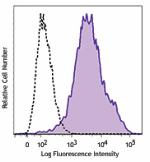
Thioglycollate-elicited Balb/c mouse peritoneal macrophages ... -
PE anti-mouse CD107a (LAMP-1)

Thioglycollate-elicited BALB/c mouse peritoneal macrophages ... -
Purified anti-mouse CD107a (LAMP-1)
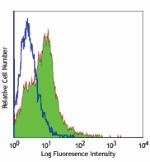
Thioglycollate-elicited BALB/c mouse peritoneal macrophages ... 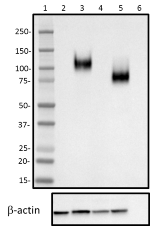
Western blot of purified anti-LAMP-1 antibody (clone 1D4B). ... -
Biotin anti-mouse CD107a (LAMP-1)
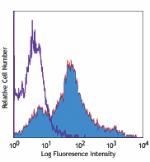
Thioglycollate-elicited BALB/c mouse peritoneal macrophages ... -
FITC anti-mouse CD107a (LAMP-1)
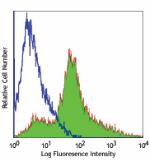
Thioglycollate-elicited BALB/c mouse peritoneal macrophages ... -
Alexa Fluor® 488 anti-mouse CD107a (LAMP-1)
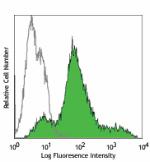
Thioglycollate-elicited BALB/c mouse peritoneal macrophages ... -
Alexa Fluor® 647 anti-mouse CD107a (LAMP-1)
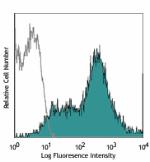
Thioglycollate-elicited BALB/c mouse peritoneal macrophages ... -
APC anti-mouse CD107a (LAMP-1)
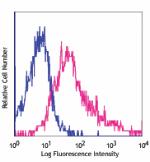
Thioglycollate-elicited Balb/c peritoneal macrophages staine... -
APC/Cyanine7 anti-mouse CD107a (LAMP-1)
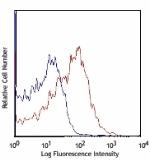
Thioglycollate-elicited BALB/c peritoneal macrophages staine... -
Brilliant Violet 421™ anti-mouse CD107a (LAMP-1)
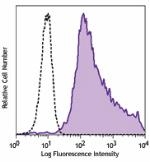
Thiogylcollate-elicited BALB/c mouse peritoneal macrophages ... -
PE/Cyanine7 anti-mouse CD107a (LAMP-1)
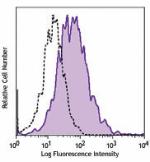
Thioglycollate-elicited BALB/c mouse peritoneal macrophages ... 
Thioglycollate-elicited BALB/c mouse peritoneal macrophages ... -
Alexa Fluor® 594 anti-mouse CD107a (LAMP-1)
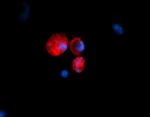
Thioglycolate-elicited BALB/c mouse peritoneal macrophages w... -
PerCP/Cyanine5.5 anti-mouse CD107a (LAMP-1)
_Antibody_FC_032516.jpg&Width=150&altFmImage_path=&Crop=5)
Thioglycollate-elicited Balb/c mouse peritoneal macrophages ... -
Alexa Fluor® 700 anti-mouse CD107a (LAMP-1)

Thioglycollate-elicited BALB/c mouse peritoneal macrophages ... -
Brilliant Violet 510™ anti-mouse CD107a (LAMP-1)
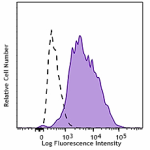
Thiogylcollate-elicited BALB/c mouse peritoneal macrophages ... -
Brilliant Violet 711™ anti-mouse CD107a (LAMP-1)

Thioglycollate-elicited BALB/c mouse peritoneal macrophages ... -
APC/Fire™ 750 anti-mouse CD107a (LAMP-1)

Thioglycollate-elicited Balb/c mouse peritoneal macrophages ... -
TotalSeq™-A0905 anti-mouse CD107a (LAMP-1)
-
TotalSeq™-C0905 anti-mouse CD107a (LAMP-1)
-
TotalSeq™-B0905 anti-mouse CD107a (LAMP-1)
-
Brilliant Violet 785™ anti-mouse CD107a (LAMP-1)

C57BL/6 splenocytes were stained with anti-mouse F4/80 FITC ... -
Spark Red™ 718 anti-mouse CD107a (LAMP-1) (Flexi-Fluor™)
-
Brilliant Violet 605™ anti-mouse CD107a (LAMP-1)

Thioglycollate-elicited BALB/c mouse peritoneal macrophages ... -
Brilliant Violet 650™ anti-mouse CD107a (LAMP-1)

Thioglycollate-elicited BALB/c mouse peritoneal macrophages ... -
Spark Blue™ 574 anti-mouse CD107a (LAMP-1) (Flexi-Fluor™)
-
Spark Blue™ 550 anti-mouse CD107a (LAMP-1) (Flexi-Fluor™)
 Login / Register
Login / Register 













Follow Us